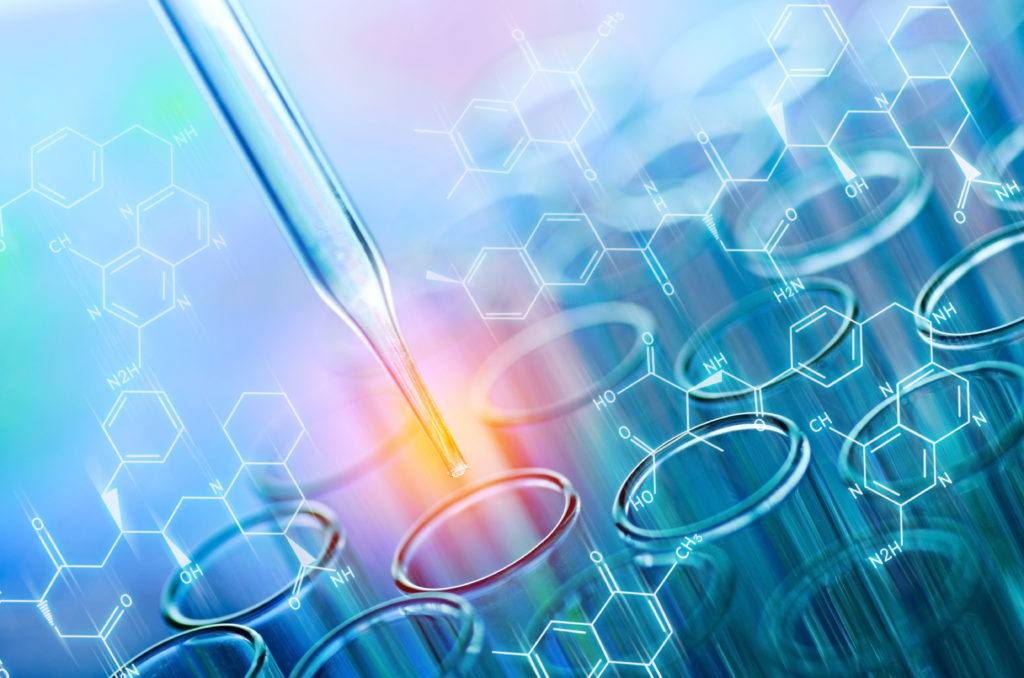
Magic mushrooms (aka psilocybin mushrooms or psychedelic mushrooms) are in the news a lot recently. These mushrooms cause profound changes in human perception and consciousness when eaten. Humans ingest magic mushrooms for recreational and spiritual purposes, and scientists are studying their potential therapeutic benefits. Here are five fascinating facts about the psychoactive molecules (aka compounds) in magic mushrooms.
1. Magic mushrooms contain more than just psilocybin.
They can also contain compounds like psilocin,1 baeocystin and norbaeocystin,2 aeruginascin,3 and norpsilocin.4 Notice how similar their chemical structures are to each other and the neurotransmitter serotonin (Figures 1 and 2). The seemingly minor differences in the chemical structures can have dramatic effects on the cellular and clinical pharmacology of the molecules.

Figure 1: The chemical structures of psilocybin, psilocin, norpsilocin, and serotonin. All four molecules are derivatives of the indoleamine tryptamine. Among their differences, psilocin has two methyl groups on the terminal amine, norpsilocin has one, and serotonin has none.

Figure 2: The chemical structures of baeocystin, norbaeocystin, aeruginascin, and serotonin. Norbaeocystin is demethylated baeocystin and aeruginascin has three methyl groups on the terminal amine while baeocystin has one and norbaeocystin has none.
2. Aeruginascin has been found in only one mushroom species, Inocybe aeruginascens.
The Aeruginascin was first isolated by German chemist Jochen Gartz in 1987.3 Chemically, aeruginascin is psilocybin with a third methyl group on the terminal amine group (compare the structures in Figures 1 and 2). Based on his analysis of data from accidental mushroom poisonings, Dr. Gartz proposed that aeruginascin created an entourage effect with other magic mushroom compounds.5
Aeruginascin seems to modify the pharmacological action of psilocybin to give an always euphoric mood during the ingestion of mushrooms.
3. Psilocybin is a prodrug of psilocin.
When a person ingests pure psilocybin, the body metabolizes it to psilocin. Psilocin is the active compound that binds to serotonin 5-HT2A receptors causing psychedelic effects.6 Magic mushrooms do contain some bioactive psilocin, but often in lesser amounts than psilocybin.7
4. Like cannabis, the compounds in magic mushrooms may act together to create an entourage effect.
In addition to Gartz as mentioned in #2 above, two other studies have suggested the existence of synergy between magic mushroom compounds. In 2009, Matsushima et al. observed that an extract from Psilocybe argentipes was more effective in reducing the symptoms of obsessive-compulsive disorder (OCD) in mice than pure psilocybin alone.8 The authors stated,
These findings suggest that inhibition of marble-burying behavior by P. argentipes is due to the involvement of a variety of psychoactive substances.
Also, in 2015, Zhuk et al. found that a magic mushroom extract having about 10% mass of total psilocybin derivatives elicited a similar behavioral response in mice as compared to an equal mass of 100% pure psilocybin.9
5. The type and amount of psychoactive chemicals in magic mushrooms are variable.
There are also substantial differences between different samples of the same species.7 The famous mycologist Paul Stamets says,
…within any one species, there can be a tenfold or more range in psilocybin and psilocin production from one collection to the next!
Different parts of mushrooms can have more/different psychoactive chemicals, too. Therefore, preparing accurate and precise doses of fresh or dried mushroom flesh is difficult and often inaccurate.
In a recent interview with Joe Rogan, Stamets explained that the “wave of the future” is making standardized formulations that include multiple psilocybin analogs, not just psilocybin.
Magic Mushrooms Contain a Cocktail of Compounds
Magic mushrooms are an excellent example of the chemical variability in natural compounds. Based on what is known about the cannabinoids in cannabis plants, it is plausible that there is synergy going on between the multiple active and inactive compounds in these mushrooms.
However, scientists don’t know if there are more compounds in magic mushrooms than the ones known right now. If there are, this adds more layers of complexity for understanding how they work individually and together. One of the goals of the new magic mushroom research center being built in Jamaica is to identify new compounds in these mushrooms. Harnessing this knowledge may result in formulations that have different properties (and therefore different effects) than pure psilocybin or magic mushrooms.
